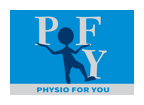Back Pain
Back pain can develop for many reasons. It may be from doing one awkward movement, or sleeping in a slightly odd position, or from standing for hours in the one position. Whatever it may be, there are always strategies you can place in your day to eliminate this pain.
Physiotherapists have the training to correctly assess the problem and provide safe, effective treatment. For rapid recovery, see your physiotherapists early.
What causes back pain?
POSTURAL STRESS
Poor posture stresses your spine. Ligaments are over-stretched, muscles tire and joints and nerves are put under pressure.
MUSCLE STRAINS
Minor back muscle strains quickly improve on their own, but more severe strains will need physiotherapy treatment to relieve pain and promote healing.
LIGAMENT SPRAINS
Stretching ligaments too far or too quickly makes them tear and bleed into surrounding tissues, causing swelling and pain. Motor vehicle and sporting accidents are common causes.
DISC PROBLEMS
Discs are anchored to the vertebrae, above and below, so they cannot “slip” out of place. They can wear down with age, but most disc problems arise from injury. Discs can bulge (prolapsed), herniated or even rupture.
SCIATICA
The sciatica nerves run from the lower back, through the buttocks and down the back of your legs. Irritation anywhere along this pathway will cause pain in the back and legs.

ARTHRITIS
Vertebral and facet joints can be affected by arthritis, causing degeneration and inflammation within the joint and the growth of bony spurs on the edges of the vertebrae.
MUSCLE WEAKNESS
Recent research has shown that weakness of the deep abdominal muscles can contribute to increased strain on the lower back.
HOW YOUR BACK WORKS
Your back is a complex system of interlocking components:
- Vertebrae are the bones that make up the spinal column
- Discs separate the vertebrae and act as shock absorbers
- Facet joints between the vertebrae guide spinal movement
- Ligaments hold the vertebrae together
- Muscles are attached to the bones. They control and produce movement.
TIPS TO HELP YOU MOVE WELL AND STAY WELL
Here is some useful advice to help you prevent back pain:
LIFTING
With your feet shoulder-width apart, bend at the hips and knees. Grip the load firmly and hold it close to your body, tighten your stomach muscles and use the strong muscles of your legs to lift. Keep your back as straight as possible, and gently breathe out. Avoid twisting – turn by using your feet, not your back.
STANDING POSTURE
Think tall: chest lifted, shoulders relaxed, chin tucked in and head level. Posture should be stable, balanced and relaxed, when sitting, walking or standing.
SITTING
Don’t stay seated for too long, ideally no more than 20 minutes. Stand up, stretch and walk around. The right back support will also help. Also ensure that your workstation and computer are correctly positioned.
EXERCISE
Stay in shape – healthy body-weight is less strain on your back. Your physiotherapist can show you how to keep your back flexible and strong with correct back and abdominal exercises.
DRIVING
Good support from your car seat will prevent back pain. If you need more lower back support, use a lumbar roll or a rolled up towel.
SLEEPING
Your mattress and pillow should be firm enough to support your natural shape.
HOW PHYSIOTHERAPY CAN HELP
Almost all Australian doctors refer patients with back pain to physiotherapists in preference to other practitioners. Depending upon the cause and type of pain, physiotherapists treat back pain in a variety of ways:
- Advice and early activity (recent research indicates that one of the most important treatments for low back pain is movement)
- Mobilisation/manipulative physiotherapy.
- McKenzie therapy.
- Specific stabilisation exercises.
- General exercises and stretches.
- Ergonomic advice.
- Postural advice.
Research has proven that specific stabilisation exercises are an effective treatment for low back pain. Physiotherapists are the only group of professionals appropriately qualified and educated to instruct in these areas.
Ongoing ‘maintenance treatments’ should not be required once your back has been successfully treated by a physiotherapist. Your physiotherapist will encourage self-management through specific exercise prescription. If severe pain persists, other causes will need to be investigated. Your physiotherapist can order x-rays or recommend that you see a doctor.
Some patients are eligible for Medicare rebates for physiotherapy, contact us for more information.
YOUR COMPLIMENTARY COPY SUPPLIED BY:
PHYSIO FOR YOU
Jacqueline Eaton
Director
Ph: 02 4392 1547
Fax: 02 4380 8410
Email: Jacqui_physio@live.com.au

